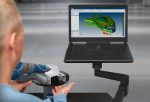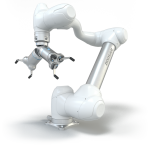Machines can’t dream
People are concerned about robots. Ever since a computer system defeated chess champion Gary Kasparov 20 years ago, public perceptions of progress in artificial intelligence (AI) research have been defined in terms of high-profile competitions pitting human against thinking machine. Anxiety is high about what the ultimate consequences could be. In the wake of Deep Blue’s triumph, other machines powered by AI have racked up momentous victories against human opponents in the game show Jeopardy and, most recently, against the world champion Go player. The latest version of Google’s AlphaGo software taught itself to play the strategy board game without any human help at all. The debate among leaders, technologists, futurists, employees of all stripes is on the profound impact AI will have on our workplace, our societies, our lives. The scale of this impact is hotly debated. Could machines replace us? Could they actually take over? There are smart minds on all sides of this issue. Some, like Professor Stephen Hawking, believe AI’s rise represents an existential threat. He told a BBC radio audience: “I think the development of full artificial intelligence could spell the end of the human race.” Others believe the rise of automation represents a veritable utopia made possible by smart machines. Optimism is a free stimulus in any country. In that spirit, this evolution could create massive potential for the human race. Any way you look at it, one thing is clear: there is nothing to be gained by hand-wringing about a dystopian future that we have the power to avoid. Let’s create the future we want to live in. Even in divisive times like these, we see human qualities such as ingenuity, kindness, innovation, and creativity rise up, take hold and gain unstoppable momentum. It is possible to create a world where AI benefits humanity, […]









